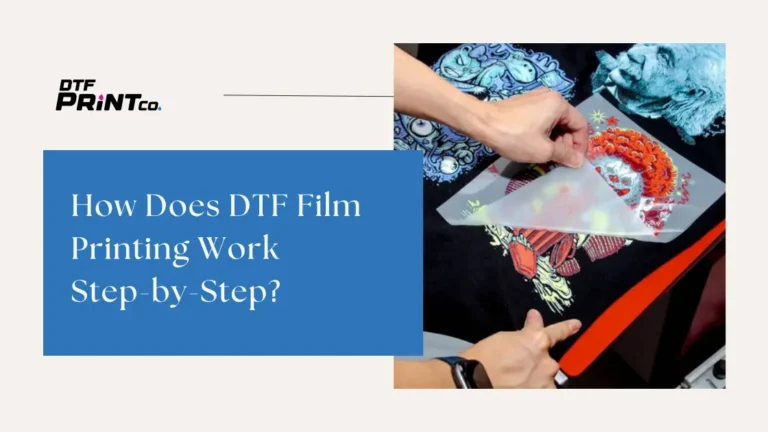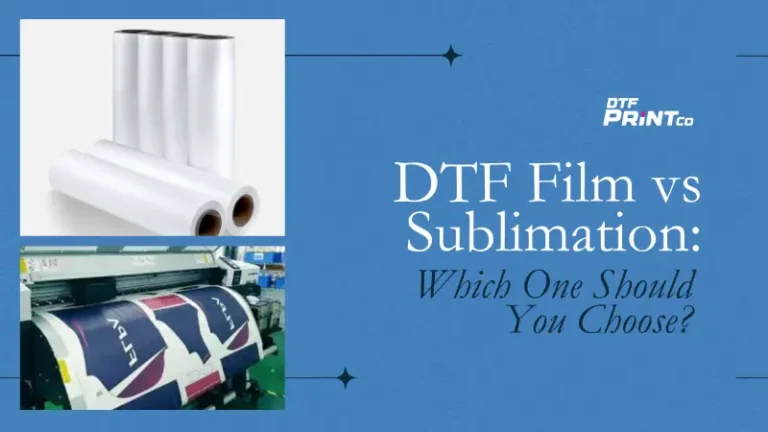
The Difference Between Hot Peel and Cold Peel DTF Film
Direct To Film (DTF) printing is rapidly becoming a popular choice for custom apparel and garment decoration. Unlike traditional screen printing or direct-to-garment (DTG) methods,

When it comes to designing customized apparel using Direct-to-Film (DTF) transfers, the “peel” method you choose—cold peel or hot peel—could make or break your project. Whether you’re crafting corporate logos on t-shirts or creating intricate custom designs, understanding these two techniques can help you make the right choice for both quality and efficiency.
But which is better? The short answer is it depends. Both cold peel and hot peel have unique strengths and weaknesses that cater to different priorities, like production speed, durability, or design complexity. To help you decide, we’ve broken down everything you need to know about each method. Grab a coffee (or your heat press), and let’s get into it!
Before we jump into the peel-off showdown, let’s quickly recap what DTF transfers are. “DTF” stands for Direct-to-Film, which involves printing designs on a specialty film and transferring them onto garments using heat. While the process itself is pretty straightforward, one critical detail sets designs apart—the way you peel the carrier film off after heat pressing the garment.
Hot peel and cold peel refer to when (and how) you remove the carrier film. This seemingly small difference can have a big impact on your workflow and the end result.
Here’s a snapshot of how cold peel and hot peel stack up:
| Feature | Hot Peel | Cold Peel |
| Peel Timing | Immediately after pressing (while hot) | After the design has fully cooled |
| Speed | Very fast 🏃♀️ | Slower 🐢 |
| Durability | Moderate | Superior (better for frequent washing) |
| Design Detail | Less detail on intricate patterns | Excellent for fine details |
| Fabric Versatility | Standard materials | Wider range of adaptable fabrics |
| Application Complexity | Simpler | Requires more patience and care |
With that quick overview in mind, let’s take a closer look at each method’s pros and cons.
Hot peel is often the go-to choice when speed is the name of the game. Picture this—you’re cranking out t-shirts for a big event, and every second counts. Hot peel lets you remove the carrier film immediately after pressing while the garment is still warm. No waiting, no extra steps. Just peel and move on to the next shirt.
Hot Peel in Action: I once helped a friend produce event merch for a charity 5K run. Since we were facing a deadline, hot peel saved the day. The process was quick, and the glossy finish looked sharp on the runners’ polyester shirts. However, feedback later revealed a few transfers didn’t hold up well after multiple washes. Lesson learned—perfect for events but not ideal for long-lasting wear.
On the flip side, cold peel is the slow and steady champion of durability and detail. Rather than peeling the carrier immediately, you wait for the garment to cool down completely. While this does add more time to your process, the results speak for themselves. Think crisp details, vibrant colors, and impeccable durability.
Cold Peel in Real Life: I once printed cold peel transfers for a boutique brand that wanted high-end, lasting designs for their clothing line. Although the process took longer, the crisp details and durable finish left everyone impressed. Months later, their team reported that the shirts still looked brand new after multiple washes. Cold peel was definitely worth the extra effort.
When deciding between hot peel and cold peel, think about your goals and priorities. Here’s a simple way to narrow it down:
At the end of the day, both cold peel and hot peel have their moments to shine. For speed and convenience, hot peel is a rock star. But if you’re after unmatched detail and durability, cold peel is your champion.
You don’t necessarily have to pick one technique forever, though! Many DTF enthusiasts (myself included) use both methods depending on the project. Experiment with samples to see what works best for your needs and the specific fabrics you’re working with. And when in doubt, don’t be afraid to take your time—because a little extra effort upfront often pays off in a big way when it comes to quality.
Hot peel allows you to remove the carrier film immediately after pressing while still hot, making it faster for production. Cold peel, on the other hand, requires cooling the film entirely before peeling, resulting in better durability and detail.
Which DTF technique is best for high-volume production?
Hot peel is ideal for high-volume production because of its speed. You can quickly press and peel, which is perfect for events or bulk orders like sports uniforms.
Which method offers better durability for frequent washing?
Cold peel provides superior durability. It has a stronger bond with the fabric, making it more resistant to cracking, peeling, or fading after repeated washes.
Can I use cold peel or hot peel on any type of fabric?
Cold peel tends to be more versatile and works well with a wider range of fabrics, including heat-sensitive ones. Hot peel is suitable for standard fabrics but may not perform well on textured or delicate materials.
How do I decide between hot peel and cold peel for my project?
It depends on your priorities. If you need speed and efficiency, choose hot peel. If durability, intricate detail, and versatility are more important, go with cold peel. Testing small samples first can also help you make the right decision

Direct To Film (DTF) printing is rapidly becoming a popular choice for custom apparel and garment decoration. Unlike traditional screen printing or direct-to-garment (DTG) methods,

If you’ve ever dreamed of creating your own custom shirts, hoodies, or tote bags without spending a fortune or dealing with messy screens, there’s some

If you’re looking to start or grow a custom apparel business, you’ve probably heard about DTF film and sublimation printing. These are two of the

2023 - 2024 © ALL RIGHTS RESERVED